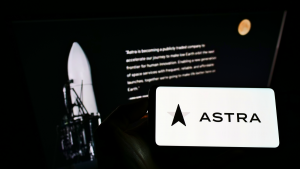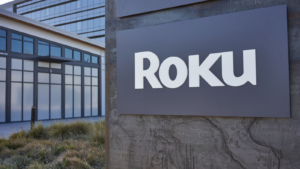The Hypergrowth Hype Trap: 3 Stocks That Promise Moonshots But Deliver Duds
Hypergrowth stocks have tremendous allure. Investing in just one company like Nvidia (NASDAQ:NVDA) or Amazon (NASDAQ:AMZN) in its early days can lead to life-changing returns.
But for every Nvidia, there are countless other companies that appeared to have tremendous prospects but were unable to turn that potential into reality. That’s been particularly true in recent years.
The pandemic caused many companies to enjoy tremendous — but temporary — growth spurts. And the 2021 special purpose acquisition company (SPAC) boom unleashed many purported hypergrowth companies with dubious underlying fundamentals onto public markets. These are three overhyped growth stocks that have seen their fortunes evaporate as reality sets in.
Astra Space (ASTR)

Astra Space (NASDAQ:ASTR) is the perfect example of a company that promised investors the stars and but failed to make it off the ground.
The company offers satellite launch services. In its 2021 SPAC investor presentation, Astra claimed to have a $150 million backlog of commercial orders and a $1.2 billion pipeline within a fast-growing market. Astra expected to deliver investors rapid growth from verticals including broadband, maritime, internet of things, earth observation and government services.
At the time of its 2021 SPAC deal, Astra’s management projected that the company would generate $256 million in revenues in 2023. Well, 2023 came and went, so how did things actually pan out? Astra Space generated a grand total of $4 million in revenues last year, falling about 98% short of prior expectations.
Several operational issues along with a strained balance sheet made it nearly impossible for Astra to carry out its original business plan. Given the company’s tailspin, Astra is reportedly considering filing bankruptcy this year. Ultimately, insiders came forward with a plan to take the company private at 50 cents per share.
As the stock debuted at a (split-adjusted) $150/share, this deal would lock in a greater than 99% loss for original investors. With ASTR stock still selling above 50 cents today, traders should sell now before either the take-under deal occurs or the company goes bust altogether. In any case, Astra stands as a stark reminder of what happens when unrealistic hypergrowth assumptions come undone.
Fastly (FSLY)

It’s right there in the name. What was Fastly (NYSE:FSLY) stock supposed to do? Go up rapidly, of course.
And, for a time, that’s exactly what it did. FSLY stock skyrocketed from $20 to more than $100 during the early days of the pandemic. Fastly operates an edge cloud platform that allows app developers and website operators to speed up and optimize their services.
In 2020, the marginal demand for internet optimization services dramatically outstripped supply as companies sought to get their products and services online as quickly as possible. Fastly’s notable client list included TikTok owner ByteDance.
Fastly enjoyed tremendous 45% revenue growth in 2020, and traders FSLY stock to the moon. At one point, the company hit a $15 billion market capitalization despite having less than $300 million in annual revenues at the time. At that price, it would have been almost impossible for Fastly to live up to investors’ sky-high expectations.
Fastly hasn’t fared quite as poorly as other 2021-era work-from-home winners. Fastly has grown revenues every year sequentially, and is on pace to grow the topline another 10% this year. But Fastly hasn’t yet managed to reach profitability, and its core edge computing services look a lot more like a commodity product today than they did during the early days of the boom.
FSLY stock has dropped more than 90% from the all-time highs. And it is already down more than 50% year-to-date, adding insult to injury, following a couple of downbeat earnings reports. With internet and software spending dramatically slowing down this year, Fastly seems like it will be stuck in the mud for a long time to come.
Roku (ROKU)

TV streaming platform Roku (NASDAQ:ROKU) is another former hypergrowth stock that has now fallen on hard times.
At the onset of the COVID-19 virus, people were stuck at home and looking to improve their home entertainment setups. Roku enjoyed an unprecedented surge in adoption as folks discovered new media options while the world economy was closed down.
ROKU stock blasted off, soaring from $75 to a peak of more than $400. At first, this optimism seemed reasonable, as the company grew revenues from $1.7 billion in 2020 to $2.7 billion in 2021. At that growth rate, anything seems possible.
However, revenue growth rapidly decelerated in 2022 and has further lost steam since then. Roku is set for around 12% revenue growth in 2024, which is fine but hardly the sort of thing people were imagining when they paid more than $400/share for the stock a few years ago.
Making matters worse, Roku is unprofitable now, and analysts see the company remaining unprofitable through at least the year 2026. Roku is seemingly running out of growth runway long before reaching sustainable profitability. That makes ROKU stock a risky bet today, and highlights the perils in paying huge valuations for emerging growth companies.
On the date of publication, Ian Bezek did not have (either directly or indirectly) any positions in the securities mentioned in this article. The opinions expressed in this article are those of the writer, subject to the InvestorPlace.com Publishing Guidelines.

